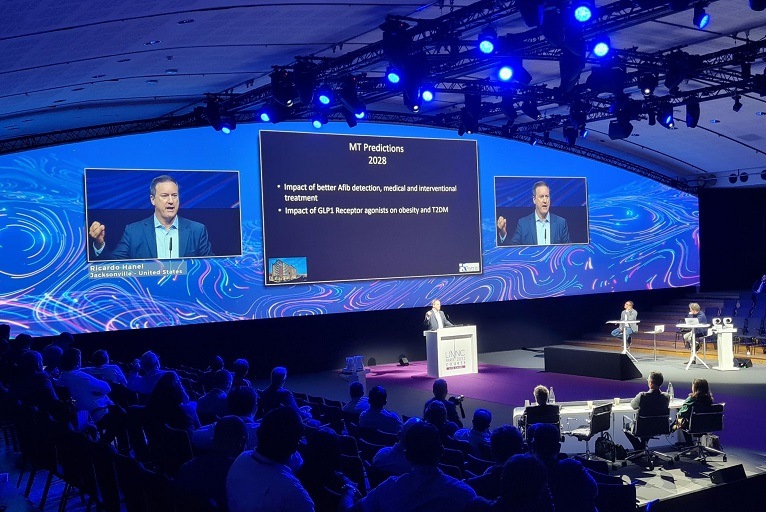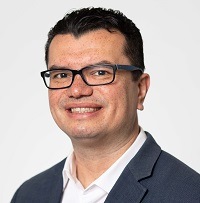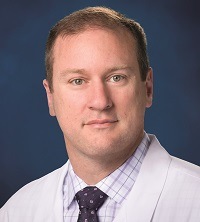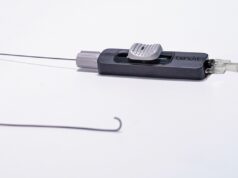 Neuroprotective agents and steerable microcatheter technologies were among a number of potential new interventional neuroradiology (INR) frontiers showcased and discussed at this year’s LINNC Paris Course (5–7 June 2023, Paris, France)—with faculty member Ricardo Hanel (University of Florida, Jacksonville, USA) commenting on the final day of the meeting that “the future is bright” in interventional stroke care.
Neuroprotective agents and steerable microcatheter technologies were among a number of potential new interventional neuroradiology (INR) frontiers showcased and discussed at this year’s LINNC Paris Course (5–7 June 2023, Paris, France)—with faculty member Ricardo Hanel (University of Florida, Jacksonville, USA) commenting on the final day of the meeting that “the future is bright” in interventional stroke care.
Excitement in neuroprotection has been reignited in recent times thanks to a number of promising research findings, and the HEMERA-1 safety study—presented to LINNC delegates by Italo Linfante (Florida International University, Miami, USA)—intends to add to this growing body of evidence in acute ischaemic stroke.
Linfante began his presentation with reference to the fact that, while mechanical thrombectomy has “changed the world”, there is still “room for improvement” in this space. He also highlighted the cerebral collateral circulation’s potential as a target for neuroprotection, with neuroprotective agents like pegylated bovine carboxyhaemoglobin (PP-007; Prolong Pharmaceuticals) currently being assessed for their ability to slow down infarct core expansion and, thus, improve clinical outcomes.
PP-007 is able to provide targeted oxygen delivery, doing so more efficiently than red blood cells over a 24-hour period; has plasma-expansion properties; and triggers carbon dioxide-induced vasodilation, the speaker stated, before touching on the promise it showed previously when tested in both normotensive and spontaneously hypertensive rats with middle cerebral artery (MCA) occlusions.

The drug has since progressed to human trials, with the randomised, Phase 1, contemporaneously controlled, multicentre HEMERA-1 study evaluating its safety and tolerability across 16 acute ischaemic stroke patients. These patients were randomised 3:1 to receive either two hours of PP-007 infusion plus standard of care or standard of care alone. Linfante noted that, in this study, ‘standard of care’ consisted of a thrombectomy procedure and did not include intravenous thrombolysis (IVT).
The HEMERA-1 investigators observed a transient rise in systolic blood pressure during PP-007 infusion (20–40mmHg), but reported no safety concerns. As per the study’s secondary, efficacy-related endpoints, Linfante and colleagues found improved leptomeningeal anastomosis (LMA) collateral perfusion and reduced infarct volumes, as well as better National Institutes of Health stroke scale (NIHSS) scores in the PP-007 cohort, and a trend towards lower modified Rankin scale (mRS) scores at 90 days. However, the speaker was quick to acknowledge that these preliminary findings come from a “very small number of patients”, and that HEMERA-1 was strictly a safety study.
Linfante closed his presentation by averring that the study “warrants further, expanded evaluation of the safety and efficacy of PP-007 in large vessel occlusion [LVO] acute ischaemic stroke”. Extension of HEMERA-1 will also include patients who receive IVT—either alteplase or tenecteplase. Collateral augmentation and targeted oxygen delivery represent “promising strategies” for improving outcomes in the thrombectomy era, Linfante concluded, adding that pleotropic agents offer additional benefits.
HEMERA-1 was well-received by LINNC’s expert panel; Tommy Andersson (Karolinska University Hospital, Stockholm, Sweden) stated a belief that “we are past the era of discussing how to do [thrombectomy], and now it is about how we optimise the clinical outcomes”, before declaring that “this is the future”. Raul Nogueira (University of Pittsburgh, Pittsburgh, USA) corroborated this view, as ‘macro-reperfusion’ is often achieved with thrombectomy, while ‘micro-reperfusion’ remains a challenge, and Hanel rounded off the discussion by predicting that “we are going to have drugs that we can give in the field”, adding “we will see a lot from this direction” in the coming years.
Catheters and guidewires

A number of the latest neurovascular device innovations also featured at LINNC 2023, including a novel, ‘articulating’ microcatheter technology called the Bendit21 (Bendit Technologies). Alejandro Berenstein (Mount Sinai Health System, New York City, USA) told attendees “I want to show you transformative technology that will put us in a new world” at the outset of his presentation, which pertained to the “revolution” such technologies may bring about—in INR in particular, but also endovascular surgery more generally, including in the peripheral and cardiac spaces.
The speaker delivered proven clinical outcomes with the US Food and Drug Administration (FDA)-cleared Bendit21 microcatheter, stating that it has been used in 64 clinical cases—as of December 2022—including stroke interventions, intrasaccular sidewall/angulated aneurysm implantations and venous access procedures. Elaborating further, he reported that no device-related safety events have been observed to date, while access success and guidewire usage rates of 93% and 25%, respectively, have also been achieved.
Despite the navigability benefits offered by this steerable device, including features like 180-degree distal tip deflection and a lock-to-treat stability mechanism, Berenstein noted a handful of potential limitations—such as in more proximal, tortuous anatomies, and in transradial access cases. Nonetheless, LINNC course director Jacques Moret (Bicêtre Hospital, Paris, France) closed the session by describing it as a “real breakthrough” for the INR field.

Elsewhere, Aymeric Rouchaud (Limoges University Hospital, Limoges, France) gave delegates an update on the Clotild smart guidewire system (Sensome), an artificial intelligence (AI)-powered device that uses micro-sensor technology to perform impedance measurements and provide physicians with information on the occlusion they are treating. Citing Sun Tzu, the speaker averred that a battle can be won before it starts, “if you know your enemy”.
The overall goal of the Clotild device, Rouchaud stated, is to help guide thrombectomy procedures and ultimately make them more effective. The future could see this technology being used to assess clot composition, clot length and vessel wall pathology—all in real time—the speaker continued. He also highlighted Clotild’s “seamless integration” into operators’ existing workflows. LINNC course director Laurent Spelle (Bicêtre Hospital, Paris, France) commented that this final point is “very important”, as the device can be introduced without adding significant time on to procedures.
A bright future?

Vitor Mendes Pereira (St Michael’s Hospital, Toronto, Canada), who is also a LINNC course director, chose to examine multiple potential ‘next frontiers’ in INR via another presentation, with the first being stenoses in the cerebral veins. Pereira urged his colleagues to appreciate the need to distinguish between ‘extrinsic’ and ‘intrinsic’ venous stenosis types i.e. if the stenosis is caused by or directly causing intracranial hypertension—also drawing attention to the risk of ‘intrinsic’ patients going blind if incorrectly treated with medication.
The speaker went on to note that venous outflow congestion has been linked to a number of other conditions, including pulsatile tinnitus—which he has started treating with venous stenting at his centre—as well as chronic migraines, headaches and high blood pressure. He also pointed to middle meningeal artery (MMA) embolisation as a promising treatment option in subdural haematoma (SDH), and one for which key clinical trials are currently on the horizon, and highlighted the potential held by Vis-M high-frequency optical coherence tomography (HF-OCT; Gentuity) in neurovascular patient management and perioperative treatment guidance.

Following this, Hanel took to the podium to provide a number of concluding messages on the future of interventional stroke care. Speculating on how this space may evolve over the next five years, he informed LINNC attendees that “the future is bright”, with improved atrial fibrillation detection; innovations like smartphone face recognition and ChatGPT (OpenAI) for stroke diagnostics; direct-to-angio suite hospital models; robotics; and even nanoparticle-based drug delivery systems all offering prospects in the field.
“The best way to predict [the future] is to help build it,” Hanel noted. “In the past few days, we have already heard a bunch of different people tell us how they are shaping the future—and five years is not that far off. It is not even 10 years since MR CLEAN was published, in December 2014. We have come a long way, and one [inescapable fact] is that mechanical thrombectomy will continue to be part of our lives and continue to grow.”









